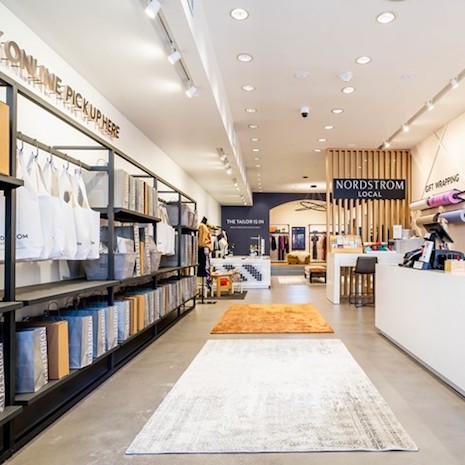 Hermès: China still packs power. Image credit: Hermès
Hermès: China still packs power. Image credit: Hermès
Fashion growth is expected to slow in 2020 to 3 to 4 percent, as labels face challenges ranging from cautious consumers to geopolitical and economic uncertainty. A new report from McKinsey and Business of Fashion finds fashion executives are far less optimistic heading into 2020 than they were ahead of 2019, with 57 percent of luxury leaders forecasting that next year will be worse. The report advises caution and resilience, advising executives that they should make quick decisions and keep mindful of risks to best navigate a changing business. "Concerns about the global economy are driving uncertainty and concern among fashion executives," said Anita Balchandani, partner at McKinsey and Achim Berg, senior partner at McKinsey & Company. "This is compounded by structural issues in the industry, from increased scrutiny on addressing the sustainability concerns facing the industry and the continued evolution of digital models and next generation of social media. "Luxury players on average have been most exposed to growth in higher net worth consumers around the world, especially China," they said. "This exposure offers a level of insulation from broader concerns about the economy." The State of Fashion report is based on a survey of 290 global executives. Fashion forecast On average, only 9 percent of executives believe that the outlook will improve next year, down from 49 percent last year. Luxury leaders are slightly more optimistic, with 12 percent projecting that 2020 will be better. There is a growing difference between brands at the top and those in the midlevel. A group of 20 Super Winners, including LVMH, Kering and Hermès, have contributed more economic profit to the fashion industry than the rest of the brands combined. Luxury as a category has been the driving force in fashion’s profitability rebound in the last two years.
The leading companies also remain ahead thanks to factors such as better access to talent.
These Super Winners excel at innovating, particularly when it comes to customer engagement.
"The Super Winners are players that champion innovation, both in product range and supply chain, while also building strong brands that authentically connect with consumers," Ms. Balchandani and Mr. Berg said. "They have their finger on the pulse of what matters most to consumers, and have consistently investing in growth." One tactic deployed by some of the Super Winners, including Burberry, is the drop-style product launch, in which limited-edition merchandise is “dropped” at a specific time to create heightened demand and hype.Instagram post from Burberry Digital marketing remains a key way of reaching consumers, but the report notes that it has become more challenging to get their attention. For instance, engagement rates for influencer marketing on Instagram have dropped. Looking beyond established platforms towards more niche channels and leveraging consumer-generated content can help labels make more of an impression. Brands also need to be mindful of where their audience actually is, and if they are spending time on TikTok or Twitter. Asian social media channels provide a glimpse of where digital marketing is going, whether it is super apps such as WeChat or the growing influence of Douyin. While digital is integral to the purchase journey, seven in 10 fashion transactions still take place in bricks-and-mortar environments, and the portion of physical store sales is even greater for luxury. Forty percent of respondents say they expect brands will open smaller format stores in new locations to cater to a local customer in a tactile fashion. Along with offering the chance to see and feel merchandise in person, having a broader footprint of smaller stores can help provide convenience to shoppers. These stores can take returns or offer other services beyond selling. For example, Nordstrom Local aims to provide services such as order pick-up, returns and alterations. These stores have a smaller footprint than traditional Nordstrom stores, since the emphasis is on service and convenience over showcasing merchandise (see story).
 Nordstrom Local store in New York. Image courtesy of Nordstrom
Nordstrom Local store in New York. Image courtesy of Nordstrom
"Larger fashion brands should look to double-down on their big priority growth drivers, especially digital and direct-to-consumer, while also ensuring that they are well positioned to perform in a downturn," Ms. Balchandani and Mr. Berg said.
"Smaller brands should continue to innovate, grow their brand stature internationally through social media and use wholesale as a complement to direct-to-consumer channels to scale up," they said.
For the first time in the report’s history, sustainability topped executives’ list of concerns. Being more sustainable is also an opportunity for companies. Part of the reason that sustainability has been brought to the forefront is consumer interest and activist pressure. Two-thirds of consumers say they consider sustainability before making a luxury purchase. Thirty-one percent of Gen Z consumers report they would spend more on an item that is sustainable, the most out of any age group. A coalition of 32 fashion companies are joining forces to tackle environmental issues such as climate change, biodiversity restoration and ocean protection, seeking to scale up their individual efforts with common objectives (see story). As part of the focus on sustainability, companies are exploring new materials that are less ecologically impactful. For instance, Chanel is working to produce materials such as leather that is tied to the food industry. Along with environmental responsibility, the industry is focusing on inclusivity and diversity. From hiring chief diversity officers to casting models from varied backgrounds, fashion businesses are being more vocal about their efforts. Courting China Fashion brands are facing growing competition from cross-border companies. This is evident in the viral Amazon coat from a Chinese producer that took off on Amazon last winter. It has also become more challenging for international brands to break into China, since they are increasingly competing with local players. Aside from being a fashion producer, China remains a key growth driver for fashion. In luxury alone, the market has accounted for 70 percent of growth. In 2019, China’s fashion business is expected to expand between 6 and 6.5 percent. The report suggests that while China is still a strategic move for companies, brands may want to think beyond the market to other Asian nations, spreading out their efforts. For instance, India has the sixth largest fashion market globally, while Southeast Asia offers markets with young consumers who are entering the workforce, with about 40 percent of the population under the age of 25. Russia is also seeing a luxury rebound, which was predicted in an earlier McKinsey survey of local executives (see story). "Though China’s economic growth rate is slowing, it still is growing rapidly in terms of absolute GDP growth," Ms. Balchandani and Mr. Berg said. "Opportunity still exists for players across price segments, including luxury brands where wealthy Chinese consumers continue to spend on fashion. "However, as local Chinese players continue to grow and challenge international brands – as exhibited by Anta Sports entering our Top 20 Super Winners list for the first time, players will need to think carefully about their value proposition and story for Chinese consumers in order to compete and win in a market that has become more challenging over the past years."